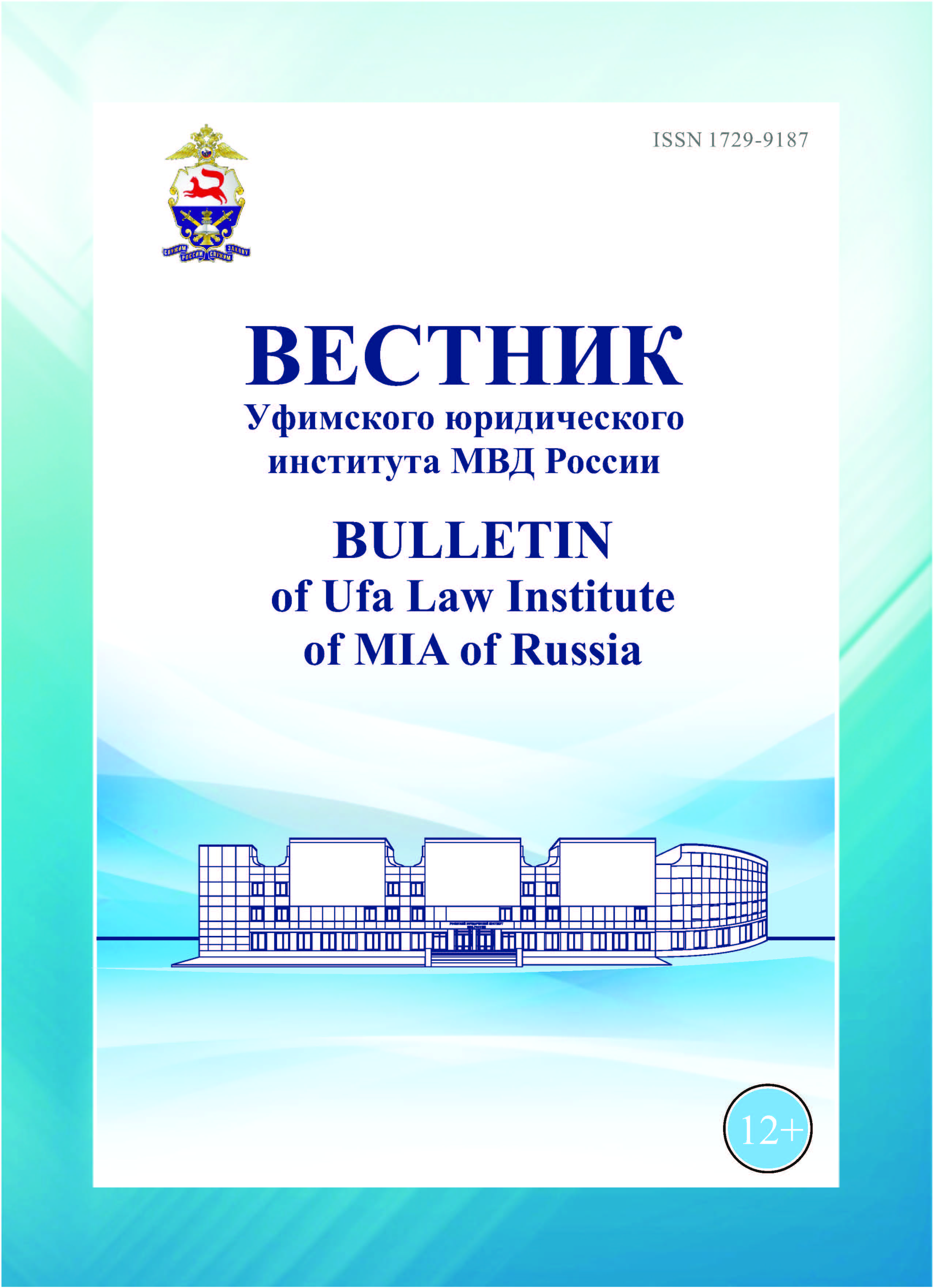UDC 343.98.062
CSCSTI 10.85
Russian Classification of Professions by Education 40.00.00
Russian Library and Bibliographic Classification 6752
Russian Trade and Bibliographic Classification 7
Russian Trade and Bibliographic Classification 7584
BISAC LAW041000 Forensic Science
The necessity for law enforcement agencies to solve a significant number of crimes in the field of computer information determines the need for timely and competent detection of forensically significant computer information. The conducted research has identified the main problems associated with the collection of digital evidence and concluded that the primary areas for improving this activity are regulation and algorithmization of the process of collecting, storing, and using digital data relevant to criminal cases; introduction of national standards for their documentation and analysis; development of certification systems for specialists; expansion of the list of software and forensic technical tools used; development of platforms for secure storage of digital evidence; and the creation of a neural network forensic data cluster with the capability for rapid search and analysis of forensically significant computer information and the formulation of effective investigation methodologies based on it.
crime investigation, computer crime, cybercrime, digital evidence, digital forensics, computer forensics, network forensics, mobile forensics, forensics 4.0, forensic technology
1. Comprehensive analysis of the state of crime in the Russian Federation and expected trends in its development: an analytical review M. V. Goncharova, M. M. Babaev, R. V. Cherkasov et al. Moscow: All-Russian Research Institute, 2024. 87 p. (In Russ.)
2. Popov A. N. Crimes in the field of computer information. Saint Petersburg: Saint Petersburg Law Institute of the University of the Prosecutor’s Office of the Russian Federation, 2018. 68 p. (In Russ.)
3. Eksarkhopulo A.A., Makarenko I.A., Zainullin R.I., Forensic Science. Theoretical Course: monograph. Ufa: Research Institute of PPG, 2022. 650 p. (In Russ.)
4. Averianova T. V. Forensic Science. Moscow: Norma, 2023. 928 p. (In Russ.)
5. Kozlov A. E., Makarova E. N., Romanova O. L. Modern technical and forensic tools used during crime scene inspection. Saint Petersburg: Saint Petersburg University of the Ministry of Internal Affairs of Russia, 2024. 64 p. (In Russ.)
6. Nesterov A.V. Virtual traces in forensic science. Moscow: Knorus Publishing House, 2024. 154 p. (In Russ.)
7. Nelufule N. Intersection of electronic security and digital forensics: data protecting techniques and uncovering data clues // Towards new e-infrastructure and e-services for developing countries. 2025. No. 587. P. 351–367.
8. Tiwari N., Baroniya Y., Bharadwaj V. Cyber and digital forensic // Textbook of forensic science. 2023. No. 25. P. 773–803. (In Eng.)
9. Garrie D. B., Gordon L. M., Newman B. Digital forensic investigations and ediscovery // Uncovering Digital Evidence. 2024. No. 1. P. 155–191. (In Eng.).
10. Adams T. A. Trends, challenges and opportunities of engaging digital forensics for cybercrime investigations // Advances in multidisciplinary and scientific research journal publication. 2024. No. 15 (1). P. 1–12. (In Eng.).
11. Thakur K. S., Ahuja R. Safeguarding justice employing blockchain-enabled secure chain of custody framework for digital evidence // Innovations in electrical and electronic engineering. 2024. No. 115. P. 1–11. (In Eng.).
12. Fedotov N. N. Forensics – computer forensics. Moscow: Legal World, 2007. 432 p. (In Russ.)
13. Cantelli-Forti A., Longo G., Lupia F. A consistent and tamper-proof methodology for acquisition of automatically verifiable forensic web evidence. International journal of information security. 2025. No. 24 (81). P. 1–14. (In Eng.).
14. Yi X., Zhou Y., Lin Y. et al. Digital rights management scheme based on redactable blockchain and perceptual hash. Peer-to-peer networking and applications. 2023. No. 16. P. 2630–2648. (In Eng.).
15. Kreso I. Using blockchain technology for preserving digital evidence in digital forensics // Knowledge international journal. 2025. No. 68 (3). P. 331–336. (In Eng.).
16. Medjedovic Dz., Tahirovic E. Algorithms and data structures for massive datasets. New York: Manning Shelter Island, 2024. 340 p. (In Eng.).
17. Ryu J. H., Sharma P. K., Jo J. H. A blockchain-based decentralized efficient investigation framework for IoT digital forensics. The journal of supercomputing. 2019. № 75. P. 4372–4387. (In Eng.).
18. Omelchenko V. A., Faniev P. A. Using open-source software to create an anonymous working environment and conduct OSINT intelligence. Moscow: Pero Publishing House, 2024. 69 p. (In Russ.)
19. Nath S., Summers K., Jaejong B. Digital evidence chain of custody: navigating new realities of digital forensics // Intelligent systems, and applications. 2024. № 6. P. 11–20. (In Eng.).
20. Xiong J., Shen L., Liu Y. Enhancing IoT security in smart grids with quantum-resistant hybrid encryption // Scientific Reports. 2025. № 15 (3). P. 1–15. (In Eng.).













